-
Out of stock

 An attractive drawing of the legendary Stags Head Public House in Dublin."With the Aberdeen granite counter and an overpowering mounted stag's head behind the bar,this is a favourite lunch-time haunt, with copious portions of 'plain ,honest to god food'.A fascinating exterior, with the opposite corner occupied by 'The Stag's Tail",well slanged by another name. 40cm x 30cm Dame St Dublin The Stag's Head is a pub on the corner of Dame Court and Dame Lane in Dublin, Ireland.Records of a pub on the site of the Stag's Head date to 1770 (original construction by a Mr. Tyson) and 1895 (extensive rebuilding).The pub is known for the preservation of its Victorian interior and the restored advertising mosaic on the footpath on Dame Street, some distance from the pub's doors.The name "Tyson", and Mr. Tyson's initials, decorate the old clock and the wrought-iron of the exterior. Mr. Tyson is also believed to have contributed to the construction of a permanent pavement over Dame Lane. There is a stuffed fox on the ground floor snug of the Stag's Head, while a large stag's head decorates the main bar. The pub has appeared in many films, notably A Man of No Importance, starring Albert Finney and Educating Rita starring Michael Caine and Julie Walters. Filming for Penny Dreadful also took place both inside and outside the pub in February 2014. The establishment was sold in 2005 for €5.8M and bought by the Louis Fitzgerald Group. A number of changes have made to the pub since the sale, most notably the introduction of a television set to the bar area.
An attractive drawing of the legendary Stags Head Public House in Dublin."With the Aberdeen granite counter and an overpowering mounted stag's head behind the bar,this is a favourite lunch-time haunt, with copious portions of 'plain ,honest to god food'.A fascinating exterior, with the opposite corner occupied by 'The Stag's Tail",well slanged by another name. 40cm x 30cm Dame St Dublin The Stag's Head is a pub on the corner of Dame Court and Dame Lane in Dublin, Ireland.Records of a pub on the site of the Stag's Head date to 1770 (original construction by a Mr. Tyson) and 1895 (extensive rebuilding).The pub is known for the preservation of its Victorian interior and the restored advertising mosaic on the footpath on Dame Street, some distance from the pub's doors.The name "Tyson", and Mr. Tyson's initials, decorate the old clock and the wrought-iron of the exterior. Mr. Tyson is also believed to have contributed to the construction of a permanent pavement over Dame Lane. There is a stuffed fox on the ground floor snug of the Stag's Head, while a large stag's head decorates the main bar. The pub has appeared in many films, notably A Man of No Importance, starring Albert Finney and Educating Rita starring Michael Caine and Julie Walters. Filming for Penny Dreadful also took place both inside and outside the pub in February 2014. The establishment was sold in 2005 for €5.8M and bought by the Louis Fitzgerald Group. A number of changes have made to the pub since the sale, most notably the introduction of a television set to the bar area. -


45cm x 34cm. Killarney Co Kerry
Theatrical advertising poster for "The way to Kenmare".Andrew Mack, born William Andrew McAloon, (July 25, 1863 – May 21, 1931) was an American vaudevillian, actor, singer and songwriter of Irish descent.A native of Boston, Massachusetts, he began his career at an early age in 1876 using the stage name Andrew Williams. He began in minstrel shows, and was especially associated with the song "A Violet From Mother's Grave".In 1892, he debuted in vaudeville. He composed songs for himself to sing. In 1899, he composed the popular song "The Story of the Rose (Heart of My Heart)" which became a standard of barbershop quartets.- Bluebeard's Seven Wives (1926)
-

 50cm x 70cm Drumcondra Dublin Once the Willy Wonka chocolate factory of Dublin,Williams & Woods kept generations of children and adults happy with their large range of confectionary items as advertised in this rare, original print from the late 1890s.The company is long gone but happily the building has been put to good use as you can read below.William's & Woods building on King's Inn Street in Dublin City Centre is where it all began - the first home to the Chocolate Factory shared creative space. Once manufacturing various sweet treats including Toblerone and Mint Crisp, this industrial building now houses an eclectic mix of small businesses and individuals in creative sectors including art, design, music, photography, craft, up-cycling, dance, illustration, graphics, events, horticulture, baking and small batch food & drink production. The incredible transformation and re-invention of Dublin's first concrete building into a creative and collaborative space continues in addition to other alternative Chocolate Factory venues around the country.
50cm x 70cm Drumcondra Dublin Once the Willy Wonka chocolate factory of Dublin,Williams & Woods kept generations of children and adults happy with their large range of confectionary items as advertised in this rare, original print from the late 1890s.The company is long gone but happily the building has been put to good use as you can read below.William's & Woods building on King's Inn Street in Dublin City Centre is where it all began - the first home to the Chocolate Factory shared creative space. Once manufacturing various sweet treats including Toblerone and Mint Crisp, this industrial building now houses an eclectic mix of small businesses and individuals in creative sectors including art, design, music, photography, craft, up-cycling, dance, illustration, graphics, events, horticulture, baking and small batch food & drink production. The incredible transformation and re-invention of Dublin's first concrete building into a creative and collaborative space continues in addition to other alternative Chocolate Factory venues around the country.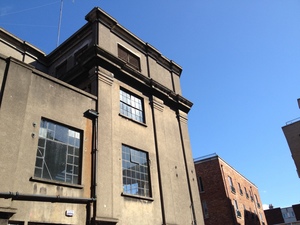
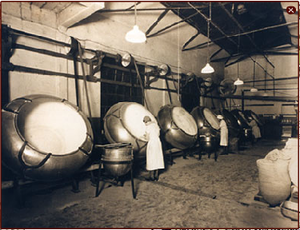
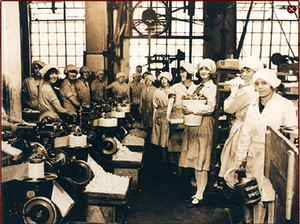
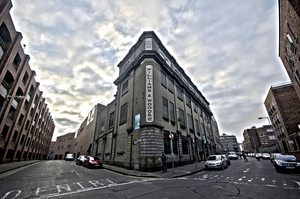 D
D
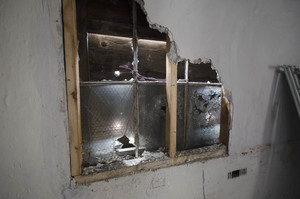
-

 35cm x 25cm Limerick William Butler Yeats (13 June 1865 – 28 January 1939) was an Irish poet, dramatist, prose writer and one of the foremost figures of 20th-century literature. A pillar of the Irish literary establishment, he helped to found the Abbey Theatre, and in his later years served two terms as a Senator of the Irish Free State. He was a driving force behind the Irish Literary Revival along with Lady Gregory, Edward Martyn and others. Yeats was born in Sandymount, Ireland, and educated there and in London. He was a Protestant and member of the Anglo-Irish community. He spent childhood holidays in County Sligo and studied poetry from an early age, when he became fascinated by Irish legends and the occult. These topics feature in the first phase of his work, which lasted roughly until the turn of the 20th century. His earliest volume of verse was published in 1889, and its slow-paced and lyrical poems display debts to Edmund Spenser, Percy Bysshe Shelley, and the poets of the Pre-Raphaelite Brotherhood. From 1900, his poetry grew more physical and realistic. He largely renounced the transcendental beliefs of his youth, though he remained preoccupied with physical and spiritual masks, as well as with cyclical theories of life. In 1923, he was awarded the Nobel Prize in Literature.
35cm x 25cm Limerick William Butler Yeats (13 June 1865 – 28 January 1939) was an Irish poet, dramatist, prose writer and one of the foremost figures of 20th-century literature. A pillar of the Irish literary establishment, he helped to found the Abbey Theatre, and in his later years served two terms as a Senator of the Irish Free State. He was a driving force behind the Irish Literary Revival along with Lady Gregory, Edward Martyn and others. Yeats was born in Sandymount, Ireland, and educated there and in London. He was a Protestant and member of the Anglo-Irish community. He spent childhood holidays in County Sligo and studied poetry from an early age, when he became fascinated by Irish legends and the occult. These topics feature in the first phase of his work, which lasted roughly until the turn of the 20th century. His earliest volume of verse was published in 1889, and its slow-paced and lyrical poems display debts to Edmund Spenser, Percy Bysshe Shelley, and the poets of the Pre-Raphaelite Brotherhood. From 1900, his poetry grew more physical and realistic. He largely renounced the transcendental beliefs of his youth, though he remained preoccupied with physical and spiritual masks, as well as with cyclical theories of life. In 1923, he was awarded the Nobel Prize in Literature. -

 40cm x 30cm Enniscrone Co Sligo William Butler Yeats(13 June 1865 – 28 January 1939) Irish poet, dramatist, prose writer and one of the foremost figures of 20th-century literature. A pillar of the Irish literary establishment, he helped to found the Abbey Theatre, and in his later years served two terms as a Senator of the Irish Free State. He was a driving force behind the Irish Literary Revival along with Lady Gregory, Edward Martyn and others. Yeats was born in Sandymount, Ireland, and educated there and in London. He was a Protestant and member of the Anglo-Irish community. He spent childhood holidays in County Sligo and studied poetry from an early age, when he became fascinated by Irish legends and the occult. These topics feature in the first phase of his work, which lasted roughly until the turn of the 20th century. His earliest volume of verse was published in 1889, and its slow-paced and lyrical poems display debts to Edmund Spenser, Percy Bysshe Shelley, and the poets of the Pre-Raphaelite Brotherhood. From 1900, his poetry grew more physical and realistic. He largely renounced the transcendental beliefs of his youth, though he remained preoccupied with physical and spiritual masks, as well as with cyclical theories of life. In 1923, he was awarded the Nobel Prize in Literature.
40cm x 30cm Enniscrone Co Sligo William Butler Yeats(13 June 1865 – 28 January 1939) Irish poet, dramatist, prose writer and one of the foremost figures of 20th-century literature. A pillar of the Irish literary establishment, he helped to found the Abbey Theatre, and in his later years served two terms as a Senator of the Irish Free State. He was a driving force behind the Irish Literary Revival along with Lady Gregory, Edward Martyn and others. Yeats was born in Sandymount, Ireland, and educated there and in London. He was a Protestant and member of the Anglo-Irish community. He spent childhood holidays in County Sligo and studied poetry from an early age, when he became fascinated by Irish legends and the occult. These topics feature in the first phase of his work, which lasted roughly until the turn of the 20th century. His earliest volume of verse was published in 1889, and its slow-paced and lyrical poems display debts to Edmund Spenser, Percy Bysshe Shelley, and the poets of the Pre-Raphaelite Brotherhood. From 1900, his poetry grew more physical and realistic. He largely renounced the transcendental beliefs of his youth, though he remained preoccupied with physical and spiritual masks, as well as with cyclical theories of life. In 1923, he was awarded the Nobel Prize in Literature.









